



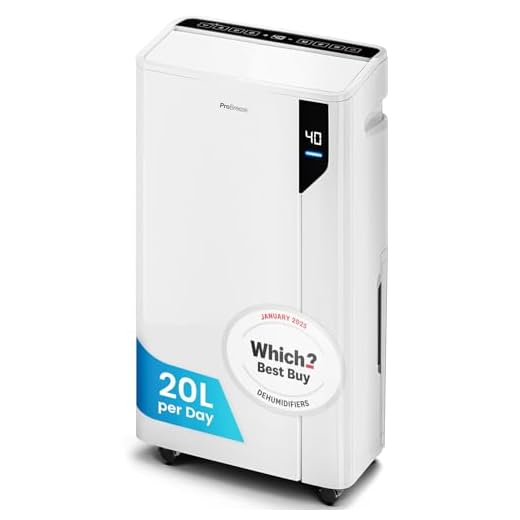
Doing laundry is a necessary chore for every household, but are you filling your washing machine optimally? Many people either overload or underload their machines, resulting in poor cleaning performance and potential damage to the appliance. To ensure your clothes come out clean and undamaged, it’s important to know how much to fill your washing machine.
Firstly, it’s essential to follow the manufacturer’s guidelines regarding the maximum load capacity of your washing machine. Overloading the machine can lead to inefficient cleaning as the water and detergent may not be able to reach all the clothes. Additionally, it can strain the machine’s motor and decrease its lifespan. On the other hand, underloading the machine can waste water and energy, as the water levels will be higher in relation to the amount of laundry being cleaned.
A general rule of thumb is to fill the washing machine approximately 80% full. This allows enough space for the clothes to move around freely and ensures proper cleaning. If your machine doesn’t have a weight sensor or a specific load capacity stated, you can visually estimate the appropriate load size. As a guide, a standard top-loading machine can typically hold around 10-12 pounds of laundry, while a front-loading machine can hold around 15-20 pounds.
Pro tip: When in doubt, it’s better to err on the side of slightly underloading the machine rather than overloading it.
Another factor to consider when determining the optimal laundry load is the type of fabric and soil level. Heavier fabrics like towels and jeans require more space to move around for proper cleaning. If the clothes are heavily soiled, additional room is necessary to allow the detergent and water to effectively remove the dirt and stains.
In conclusion, filling your washing machine optimally is key to efficient cleaning and prolonging the lifespan of the appliance. Follow the manufacturer’s guidelines, visually estimate load size if necessary, and consider the fabric type and soil level in order to achieve optimal laundry loads. By doing so, you’ll ensure your clothes come out fresh and clean every time.
Proper Laundry Load: How Much to Fill a Washing Machine?
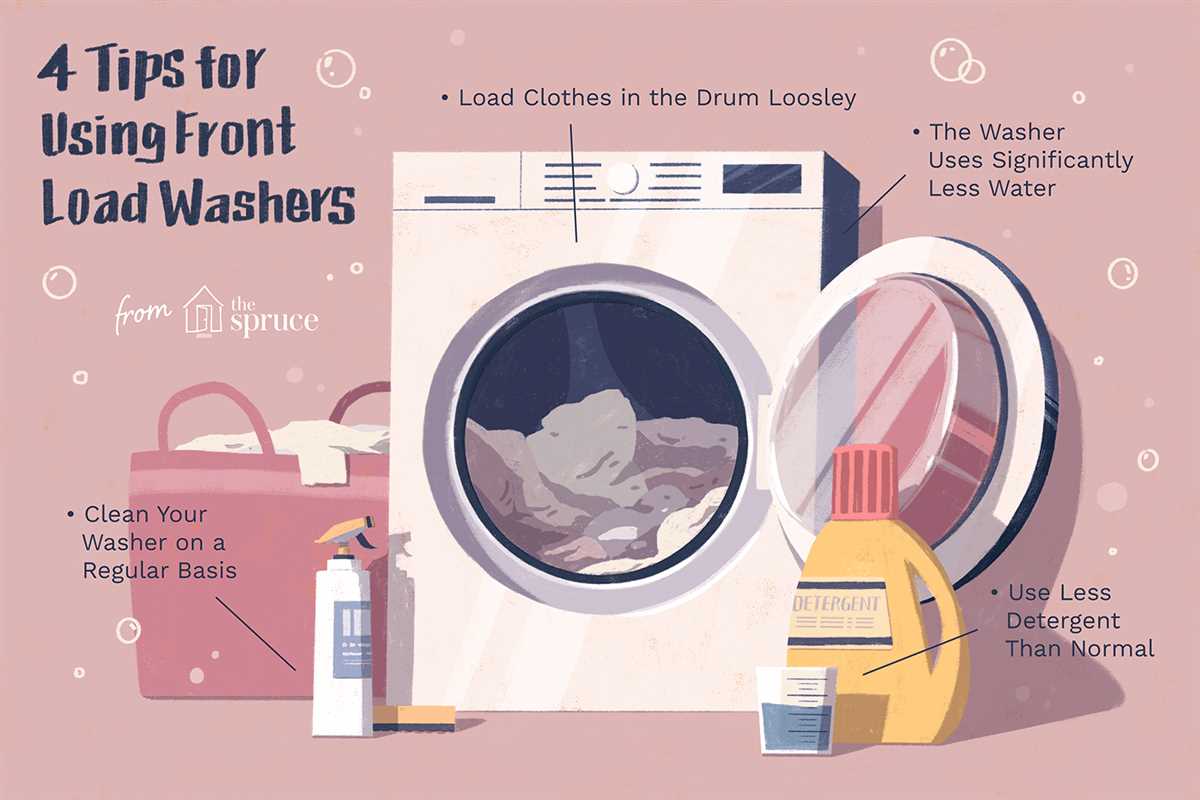
Properly loading a washing machine is essential to ensure optimal cleaning performance and avoid potential damage. Here are some tips on how much to fill a washing machine:
1. Follow the Manufacturer’s Guidelines
Always refer to the manufacturer’s instructions, as they provide specific guidance on the maximum load capacity for your washing machine. Overloading can lead to poor cleaning results and increased wear and tear on the machine.
2. Leave Room for Movement
Avoid overpacking the machine as it needs room for the clothes to move freely during the wash cycle. Proper movement helps to ensure thorough cleaning by allowing water, detergent, and air to circulate.
3. Don’t Underfill the Machine
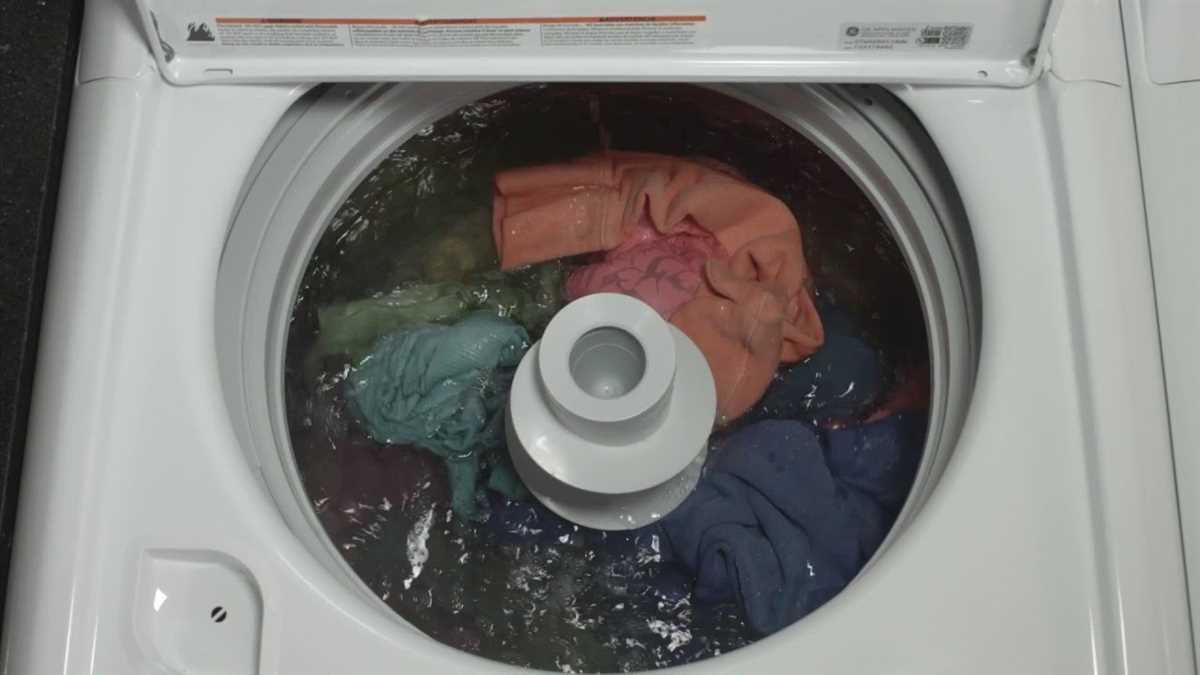
On the other hand, underfilling the machine can result in inefficient water and energy usage. It is best to load the washing machine to at least 75% of its capacity to achieve a proper balance between cleaning effectiveness and resource efficiency.
4. Use a Scale for Accuracy
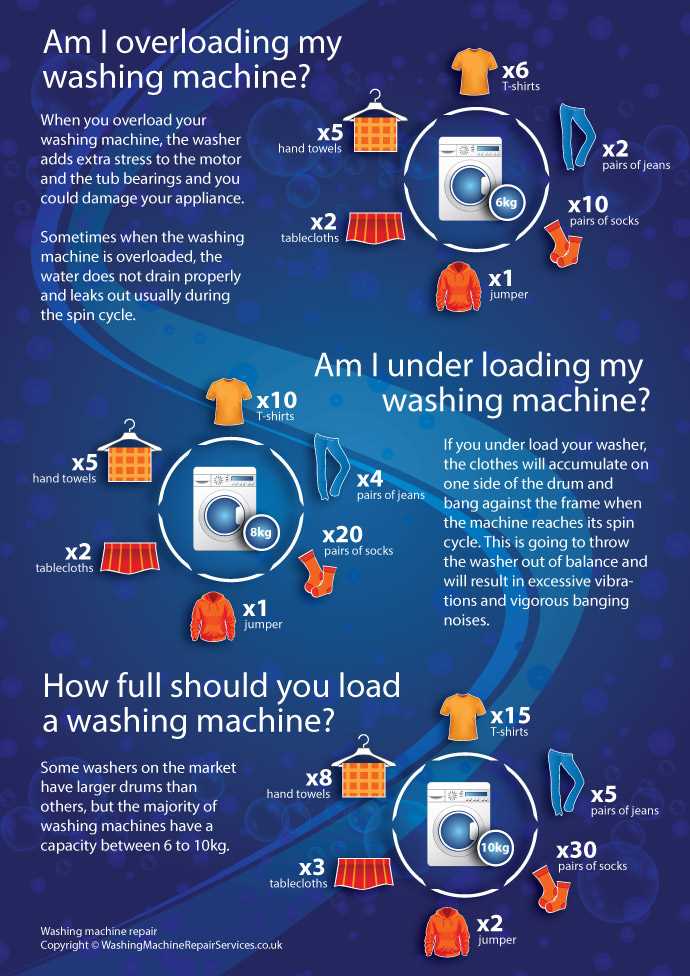
If you want to be precise, you can use a bathroom scale to weigh your laundry load. Simply weigh an empty laundry basket and then weigh it again when filled with clothes. Subtract the initial weight to determine the load weight. Check the washing machine’s capacity and adjust accordingly.
5. Consider Fabric Type and Care Labels
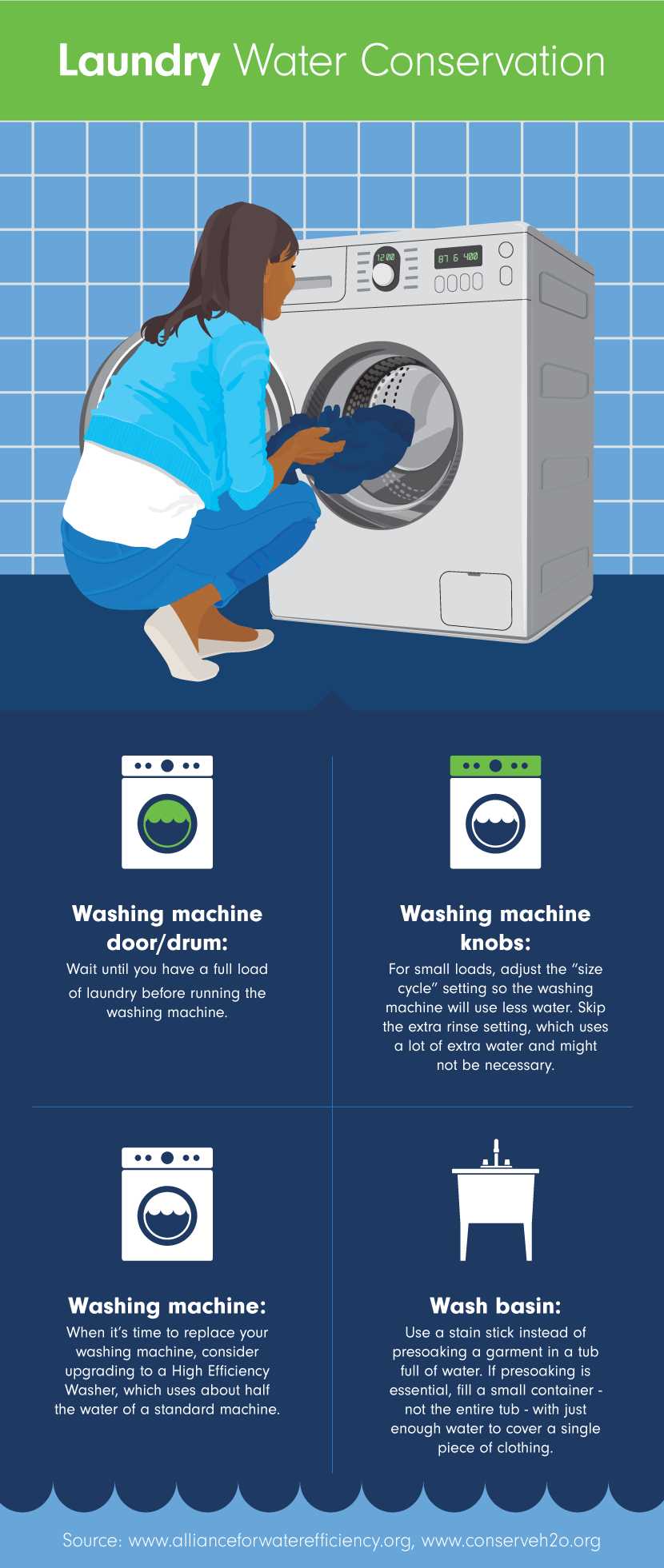
Ensure that you are following the care labels on your garments. Delicate or heavily soiled items may require less laundry to ensure proper cleaning. If in doubt, it’s better to err on the side of caution and underfill the machine to protect your clothes.
6. Sort Similar Items
Grouping similar items together, such as by fabric type or color, can improve cleaning results and reduce the risk of damage. It allows for more efficient washing cycles and prevents color bleeding or fabric damage caused by friction.
7. Maintain Balance for Front-Loaders
If you have a front-loading washing machine, ensure that the drum is balanced. Uneven distribution of laundry can cause excessive vibration during the spin cycle, potentially damaging the machine. If necessary, redistribute the load to achieve a balanced drum.
Conclusion
Properly loading your washing machine is crucial for effective cleaning and maintaining the longevity of the appliance. By following these tips and considering the manufacturer’s guidelines, you can achieve optimal laundry loads and keep your clothes looking fresh and clean.
Consider the Capacity of Your Washing Machine
One important factor to consider when deciding how much to fill your washing machine is its capacity. The capacity of a washing machine refers to the maximum amount of laundry that it can hold and clean effectively.
To determine the capacity of your washing machine, you can check the manufacturer’s specifications or look for the label on the machine itself. The capacity is typically measured in pounds or kilograms, indicating the weight of the laundry that the machine can handle.
It is important to follow the recommended capacity guidelines provided by the manufacturer. Overloading the machine can lead to poor cleaning results as the water and detergent may not be able to reach and agitate all of the clothes effectively. On the other hand, underloading the machine can result in wasted water and energy.
Additionally, overloading the machine can put excessive strain on its motor and other components, potentially leading to mechanical issues and a shortened lifespan of the appliance. It is generally recommended to leave some extra space in the drum of the washing machine to allow for proper movement and agitation of the clothes.
If you are unsure about the capacity of your washing machine, you can consult the user manual or contact the manufacturer for more information. Following the recommended capacity guidelines will help ensure optimal cleaning results and prolong the life of your washing machine.
It is also worth noting that the capacity of your washing machine may vary depending on the type and fabric of the laundry. For example, bulky items like blankets or comforters may require more space in the drum, while delicate or loosely woven fabrics may need to be washed in smaller loads to prevent damage.
By considering the capacity of your washing machine and following the manufacturer’s guidelines, you can optimize your laundry loads for efficient and effective cleaning.
Avoid Overloading – Follow the Manufacturer’s Recommendations
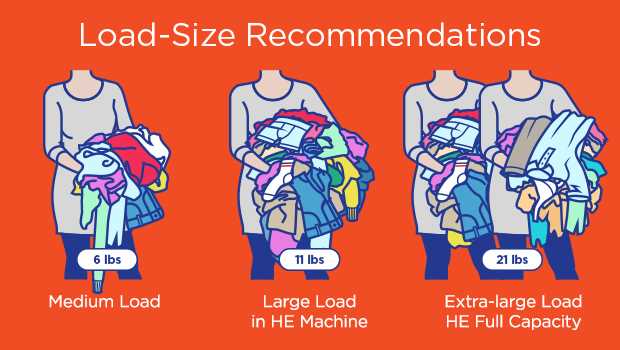
One of the most important tips for optimal laundry loads is to avoid overloading your washing machine. Overloading can lead to inadequate cleaning, increased wear and tear on the machine, and even damage to your clothes. To ensure that you’re not overloading your washing machine, it’s crucial to follow the manufacturer’s recommendations.
Manufacturers typically provide guidelines regarding the maximum weight or capacity that the washing machine can handle. This information can usually be found in the user manual or on the manufacturer’s website. It’s essential to refer to these guidelines and adhere to them when loading your machine.
Overloading the washing machine can prevent proper agitation and movement of the clothes during the wash cycle. This can result in clothes not being cleaned thoroughly and effectively. Additionally, an overloaded machine can strain the motor and other internal components, potentially leading to mechanical problems in the long run.
Following the manufacturer’s recommendations for loading capacity ensures that your washing machine operates optimally, providing you with cleaner clothes and extending the lifespan of the machine. Remember, it’s better to do multiple smaller loads than to overload the machine in an attempt to cut down on laundry time.
By following the manufacturer’s recommendations, you’ll also save on water and energy consumption. Washing machines are designed to work most efficiently when utilized within their recommended capacity. Overloading the machine can result in excessive water usage and longer washing cycles, which can increase your utility bills.
Lastly, take note of any special instructions provided by the manufacturer. Some washing machines may have specific recommendations for certain types of fabrics or cycles. Adhering to these instructions will help protect delicate clothes and ensure optimal cleaning performance.
In conclusion, avoiding overloading your washing machine is vital for optimal laundry loads. Follow the manufacturer’s recommendations regarding weight capacity to achieve cleaner clothes, extend the lifespan of your machine, and save on water and energy consumption.
Keep the Load Balanced – Distribute the Clothes Evenly
When loading a washing machine, it is important to distribute the clothes evenly to ensure optimal washing performance. Here are some tips to help you keep your load balanced:
-
Sort your clothes: Before loading the machine, separate your clothes by fabric type, color, and weight. This will make it easier to distribute them evenly in the machine.
Top RatedPro Breeze Energy Efficient DehumidifierRemoves up to 20 litres of moisture dailyDesigned for medium to large rooms, this dehumidifier helps prevent damp and mould with its innovative laundry mode and intelligent humidity sensor. -
Start with large items: Begin by placing larger items, such as sheets or towels, at the bottom of the drum. This will help distribute the weight evenly and prevent the machine from becoming unbalanced during the wash cycle.
-
Add smaller items: Fill in the empty spaces with smaller items, such as socks or underwear. Distribute them evenly around the larger items to maintain balance.
-
Avoid overloading: It is important not to overload the machine, as this can cause it to become unbalanced. Follow the manufacturer’s guidelines for load capacity to ensure proper balance.
-
Check for balance: Once the machine is loaded, check to make sure that the weight is evenly distributed. If you notice any imbalance, redistribute the clothes to achieve a balanced load.
-
Use a pedestal: If your washing machine is equipped with a pedestal, consider using it. The added height can help distribute the weight more evenly and reduce the risk of imbalance.
By keeping the load balanced and distributing the clothes evenly, you can help prevent the washing machine from becoming unbalanced during the wash cycle. This will not only ensure optimal cleaning performance but also extend the lifespan of your machine.
Don’t Underload – Optimize Water and Energy Usage
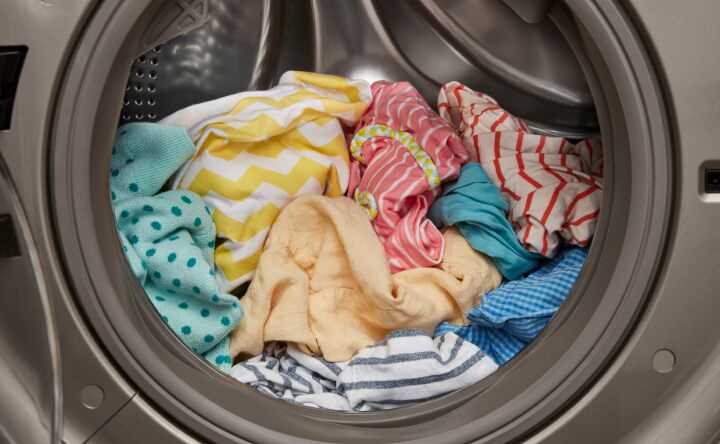
When it comes to doing laundry, it’s important to find the right balance between underloading and overloading your washing machine. While overloading can lead to poor cleaning results and possible damage to your machine, underloading also has its downsides. One major drawback of underloading is the inefficient use of water and energy. Here are a few reasons why you should avoid underloading your washing machine:
1. Wasted Water

When you underload your washing machine, you end up wasting a significant amount of water. Most modern washing machines have sensors that detect the weight of the laundry load and adjust the water level accordingly. If you don’t have enough clothes in the machine, it will still fill up with water based on the default settings, leading to unnecessary water consumption.
2. Wasted Energy
In addition to wasting water, underloading your washing machine also wastes energy. Washing machines consume energy not only when they are in operation but also when they heat up the water. When you underload the machine, it has to heat up a larger volume of water than necessary, resulting in increased energy consumption and higher electricity bills.
3. Inefficient Cleaning
Underloading your washing machine can also lead to inefficient cleaning. When the load is too small, the clothes may not agitate enough against each other, causing less effective removal of dirt and stains. This can result in the need for additional cycles or re-washing, which again leads to wasted water, energy, and time.
To optimize water and energy usage while doing laundry, follow these tips:
- Try to load your washing machine to at least 75-80% of its capacity. This will provide enough agitation for a thorough clean while avoiding overloading.
- If you have a small load of delicate items, use the appropriate cycle setting or choose a half-load option if available. This will ensure efficient cleaning without wasting water and energy.
- Consider using a high-efficiency washing machine that has advanced sensors and settings specifically designed to optimize water and energy usage.
- Use cold water whenever possible, as heating water accounts for a significant portion of energy consumption during a laundry cycle.
By avoiding underloading your washing machine and following these tips, you can maximize the efficiency of your laundry routine, save water and energy, and reduce your environmental impact.
Take Care of Delicate Items – Separate Small Loads
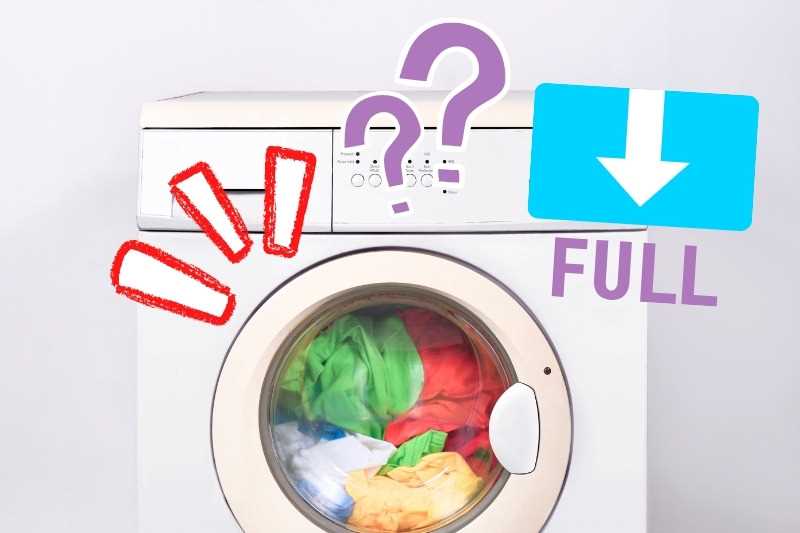
Delicate items require special attention and care when it comes to washing them. To ensure that your delicate garments and fabrics are properly cleaned and protected, it is important to separate them into small loads. This allows for more gentle washing and prevents any potential damage that may occur when mixed with heavier or more abrasive items. Here are some tips to help you take care of your delicate items:
- Read the care labels: Before washing any delicate items, always check the care labels for specific instructions. This will help you determine the appropriate wash cycle, water temperature, and any special care requirements.
- Sort by fabric type: Group delicate items together based on their fabric type. For example, separate silk, lace, and chiffon items from cotton or denim. This will ensure that each fabric receives the proper care it needs during the wash cycle.
- Use a gentle wash cycle: Select a gentle or delicate wash cycle on your washing machine. This will minimize agitation and reduce the risk of damaging delicate items.
- Wash with like colors: To prevent color bleeding or fading, wash delicate items with similar colors. This will help maintain the integrity of the fabric and keep your garments looking vibrant.
- Avoid overloading: It is important not to overload the washing machine when washing delicate items. Overloading can cause excessive friction, which may result in damage to the items.
- Use a protective mesh bag: For extra protection, consider using a mesh laundry bag for delicate items like bras, underwear, or fine knitwear. This will prevent them from getting tangled or stretched during the wash cycle.
- Air dry: After washing, avoid using the dryer for delicate items. Instead, lay them flat or hang them to air dry. This helps to preserve the shape and quality of the fabric.
By taking the time to properly care for your delicate items and separating them into small loads, you can ensure that they remain in pristine condition for years to come.
FAQ
What is the optimal amount of clothes to put in a washing machine?
The optimal amount of clothes to put in a washing machine depends on the capacity of the machine. It is generally recommended to fill it around 80% full, leaving enough space for proper water circulation and movement of the clothes during the wash cycle.
Is it better to wash a large load or a small load of laundry?
It is generally better to wash a full load of laundry rather than a small load. This is because washing a full load helps to maximize the efficiency of water and energy usage. However, it is important to avoid overloading the machine, as it can lead to poor cleaning results.
What are the consequences of overloading a washing machine?
Overloading a washing machine can have several consequences. Firstly, it can result in poor cleaning results, as the clothes may not have enough space to move around and agitate properly. Secondly, it can put stress on the machine’s motor and other components, leading to increased wear and tear. Additionally, overloading can cause the machine to become unbalanced, leading to excessive noise and vibrations.
Can I mix different types of fabrics in one load?
While it is generally safe to mix different types of fabrics in one load, it is important to consider the care instructions for each garment. Some fabrics may require special care or have specific washing requirements. It is always a good idea to sort your laundry by fabric type and follow the care instructions to ensure optimal results and prevent any damage.
What should I do if I have a small load of laundry to wash?
If you have a small load of laundry to wash, you can adjust the water level settings on your machine if it allows for customization. Most modern washing machines have options to select a smaller load size, which will use less water and energy. If your machine does not have this feature, you can try using a lower water temperature setting and a shorter wash cycle to save resources.
What is the optimal amount of laundry to put in a washing machine?
The optimal amount of laundry to put in a washing machine depends on the size of the machine. Generally, you should fill it up to about 80% of its capacity. This allows enough space for the clothes to move around and get cleaned properly.
Is it okay to overfill a washing machine?
No, it is not recommended to overfill a washing machine. Overfilling can lead to inefficient cleaning as the clothes may not have enough space to move around. It can also put a strain on the machine’s motor and reduce its lifespan.
















